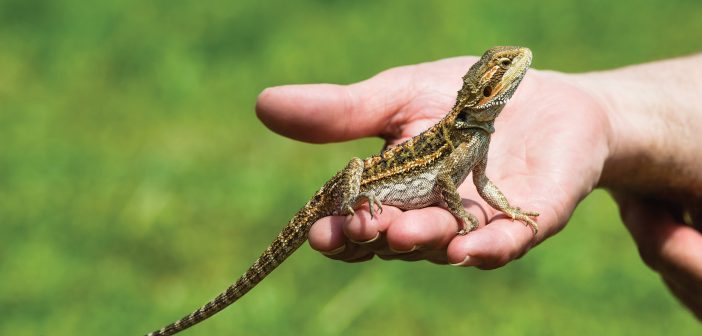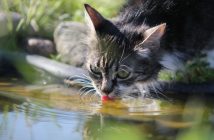by Neil Moss, DVM
As a veterinarian, I see many ailing reptiles who are sick because people don’t know how to take care of them properly. They are becoming increasingly popular as pets here in Utah, so I want to take a few minutes to cover the basics of reptile care.
About 80% of the reptile problems I deal with are caused by the owner not understanding the basic needs of their chosen species. I strongly recommend you take the time to study where in the world your herp (reptile or amphibian) comes from, and strive to mimic that environment as closely as possible. Specifically, the following four elements are vital:
About 80% of the reptile problems I deal with are caused by the owner not understanding the basic needs of their chosen species. I strongly recommend you take the time to study where in the world your herp (reptile or amphibian) comes from, and strive to mimic that environment as closely as possible. Specifically, the following four elements are vital:
TEMPERATURE: Reptiles are cold blooded (poikilotherms), which means their internal body temperature will match the temperature of their environment. Unlike warm blooded animals, they cannot maintain an even body temperature, so if the cage is too cold their core temperature will be cold. Ask yourself, what is the natural day and night time temperature of the part of the world where my reptile comes from? A Corn Snake comes from the southeastern and central United States and is comfortable in the mid 70°s (Fahrenheit); whereas a Bearded Dragon comes from the deserts and shrublands of Australia and prefers a basking temperature of 100°F. If you keep a Beardie at 75°F it will be too cold and its heart rate and digestion will slow down, leading to ill health. Alternately keeping that Corn Snake at 100°F will cause its whole metabolism to increase and it will “burn up.” Remember, it is hard to maintain a vivarium temperature of 100°F in the Utah winter! I always ask my clients what temperature the cage is at and when they answer I ask, “How do you know it’s at that temperature?” The answer I am waiting for is that they have cage thermometers. You need cage thermometers so that you can accurately assess this environmental variable.
HUMIDITY: Once again, this is common sense, but for the novice herpetologist may not be that obvious. A Chinese water dragon that comes from the lowland tropical forests of China, Thailand and Cambodia will need 80% humidity, while a Leopard Gecko that lives in the arid deserts of Afghanistan will need a much drier environment. Again, too much or too little will lead to disease.
UV LIGHT: For many reptiles this is an essential. There is an important relationship between ultra violet light, vitamin D3 and calcium. Without ultra violet light your reptile cannot activate the vitamin D3 within its body; and without vitamin D3 it cannot absorb calcium from the bowel. So without the UV light, it doesn’t matter how much calcium powder you put on your herp’s food, it can’t make use of it. Specifically, you will need a UVB light, which is available from any reputable pet store. Also, it is very important to understand that these bulbs should be replaced every six months. Even if they are giving off plenty of natural light, the UV emissions burn out in about six months.
FOOD AND WATER: Strive to match your reptile’s natural food as much as possible: Leopard Geckos do not eat vegetables and plants; Tortoises are 98% vegetarian but will benefit from the odd earthworm; Beardies start out being 90% carnivorous but should end up being 80% vegetarian. When providing water, remember that a desert species might only drink a little bit each day (they are very good at conserving their body water supply); tree dwelling species such as Chameleons and Anoles may only drink the dew drops from the leaves. In this case, they need to have their leaves misted twice daily. I have had cases where a Chameleon was given a bowl full of water in the bottom of its cage and still came in dehydrated!
In order to have a healthy reptile the take
home message is – do your homework!
Dr. Neil Moss graduated from the Royal Veterinary College, London, and has worked in England; Newfoundland, Canada and Utah. Owner of the Kaysville Veterinary Hospital, he works with dogs, cats, exotic mammals, reptiles and birds. He is a former President of the Utah Veterinary Medical Association; Utah Veterinarian of the Year for 2012; serves on the Educational Commission for Foreign Veterinary Graduates and currently serves as the Utah delegate to the American Veterinary Medical Association.




